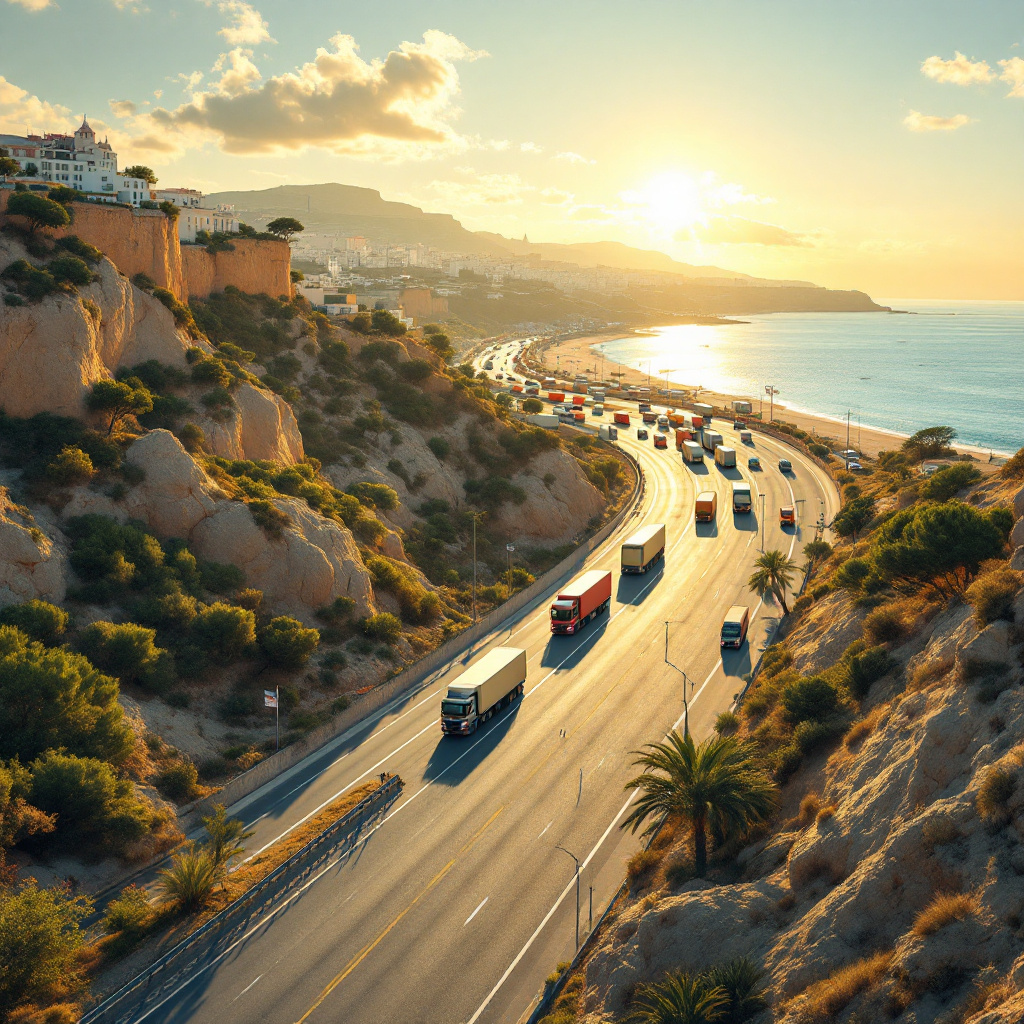The Lisbon – Faro: Distance is a crucial freight transport route connecting Portugal’s capital with the southern tourist region of the Algarve. Lisbon, a historic and economic hub, is known for its thriving business and cultural scene. Faro, the gateway to the Algarve, is a key destination for tourism and trade. This article explores the logistics, key transportation aspects, and optimal freight solutions for this corridor.
Lisbon – Faro: Distance by Car and Route
The Lisbon – Faro: Distance by Car is 278 km, with the primary route being the A2 highway. The driving time for freight transport is approximately 2.5 to 3 hours, depending on traffic conditions.
Alternative routes:
- IC1 – a national road alternative, often used for avoiding toll costs but with longer travel times.
- A6 and A22 – a potential bypass route for logistics operations requiring connections to Spain.
Freight Transport Features on the Lisbon – Faro Route
- Key economic corridor – facilitates trade between the capital and the Algarve region.
- Well-maintained highways – ensuring smooth and efficient transport.
- Toll roads on A2 – costs should be considered for budget planning.
- Seasonal traffic variations – increased congestion during the summer due to tourism.
Main Categories of Transported Goods
- Fresh produce and seafood – essential for the Algarve’s hospitality industry.
- Retail and consumer goods – supporting the region’s commercial activities.
- Construction materials – necessary for the ongoing infrastructure developments in the Algarve.
- Automotive parts and industrial equipment – vital for local businesses and vehicle rental services.
Transport Vehicles for Freight on the Lisbon – Faro Route
- Heavy-duty trucks and trailers – for large-scale shipments.
- Refrigerated trucks – for perishable food items and pharmaceuticals.
- Light commercial vans – for urgent and small-scale deliveries.
Tips for Organizing Freight Transport
- Plan deliveries outside peak tourist hours – to avoid delays during high season.
- Leverage logistics hubs – key warehousing locations in Lisbon and Faro streamline distribution.
- Use GPS and real-time traffic updates – to optimize routes and reduce travel time.
- Ensure compliance with transport regulations – especially for food and perishable goods.
Conclusion
The Lisbon – Faro: Distance by Car route is essential for freight transport in Portugal, serving as a major link between the capital and the Algarve’s dynamic economy. Efficient logistics planning, awareness of seasonal traffic fluctuations, and the right choice of transport vehicles ensure cost-effective and timely deliveries.


